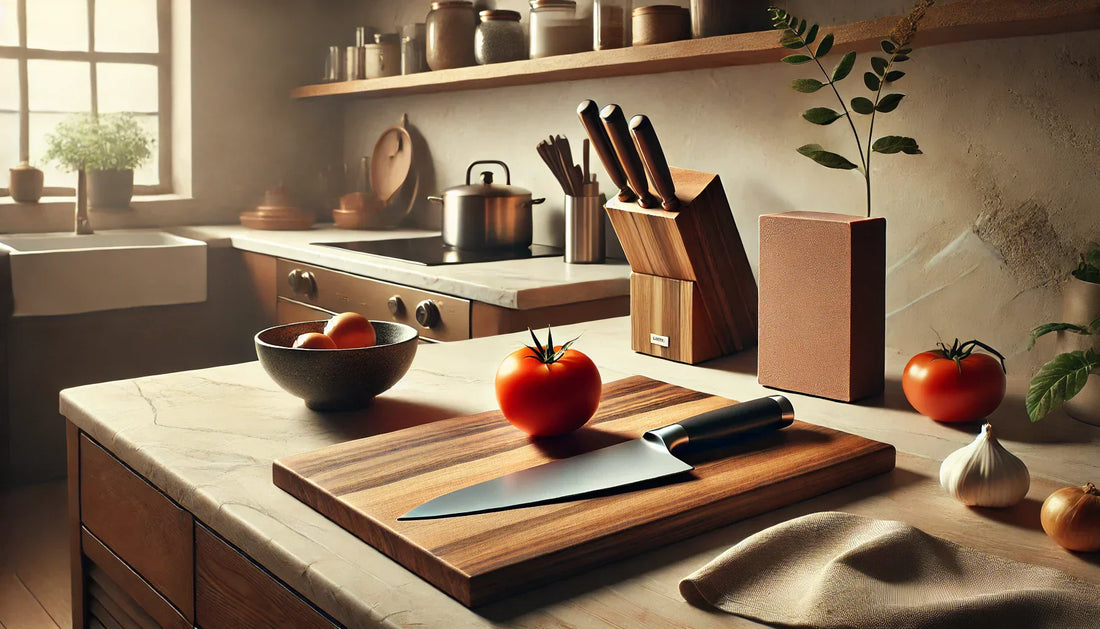
How to Identify When Your Knife Needs Sharpening
Share
Knives are an essential part of any kitchen and keeping them sharp is key to maintaining efficiency and safety. But how do you know when your knife needs sharpening? In this post, we’ll guide you through ways to recognize a dull blade, how often you should sharpen your knives and give you tips on maintaining that razor-sharp edge.
Why Sharpness Matters
A sharp knife is not only more effective but also safer. When your blade is sharp, you have better control and are able to make clean cuts with minimal effort. A dull knife, however, requires more force, which increases the risk of it slipping and causing an injury. Knowing when to sharpen your knife can save you time, keep you safe and improve your overall cooking experience.
How to Tell When Your Knife is Dull: 5 Practical Tests
1. The Paper Test
One of the simplest ways to check if your knife is sharp is by using a piece of paper. Hold a sheet of paper in the air and try slicing through it. If the blade glides effortlessly, then your knife is sharp. If it snags or requires force, then it’s time for sharpening.
2. The Tomato Test
A sharp knife should easily slice through the skin of a tomato without crushing it. If you notice that your knife is struggling or you’re applying extra pressure, then it’s time for sharpening.
3. Visual Check
Sometimes, a visual inspection can reveal a dull knife. A sharp edge should appear smooth and uniform, while a dull knife might have visible nicks or unevenness.
4. Feeling Resistance When Cutting
When a knife becomes dull, it won’t cut through food as easily, and you may feel resistance when slicing items like onions, meat or bread. If you need to saw back and forth or apply more pressure than usual, then it’s time to sharpen your knife.
5. The Onion Test
Dull knives often crush the outer layers of an onion rather than making clean cuts. If your onion’s layers get mangled during chopping, then it’s a clear sign your knife needs attention.
How Often Should You Sharpen Your Knives?
The frequency of sharpening depends on the quality of your knife, how often you use your knives and what you’re cutting. If you’re cooking regularly, then you should sharpen your knives every few months. For those who use their knives daily, then sharpening every 1-2 months is recommended. However, honing your knife after every few uses can help maintain the edge for longer, reducing the need for frequent sharpening.
Check out our posts on Mastering the Art of Knife Sharpening and Honing vs. Sharpening: What’s the Difference? to find out how to sharpen your knife and learn how honing can keep your knives performing well between sharpening sessions.
Additional Knife Maintenance Tips
1. Use the Right Cutting Board
Wooden or plastic cutting boards are gentler on knife edges compared to hard surfaces like glass or stone (we prefer wooden cutting boards). Using the right board helps prolong the sharpness of your knife.
2. Store Your Knife Properly
Proper storage, such as using a magnetic strip, knife block or sheath, will help maintain your knife’s sharpness. Storing knives loosely in a drawer can cause dulling over time due to contact with other utensils.
3. Avoid the Dishwasher
Dishwashers can damage your knife’s blade due to the high pressure and heat. Always hand wash your knives with mild soap and dry them immediately to prevent dullness or corrosion.
Knowing when to sharpen your knife is essential for safety and optimal performance. By recognizing the signs of a dull knife—whether through the paper test, visual inspection, or everyday use—you can ensure your knife remains an effective tool in your kitchen. SEKKIN knives are designed for long-lasting sharpness, but like all high-quality blades, they still benefit from regular maintenance.
